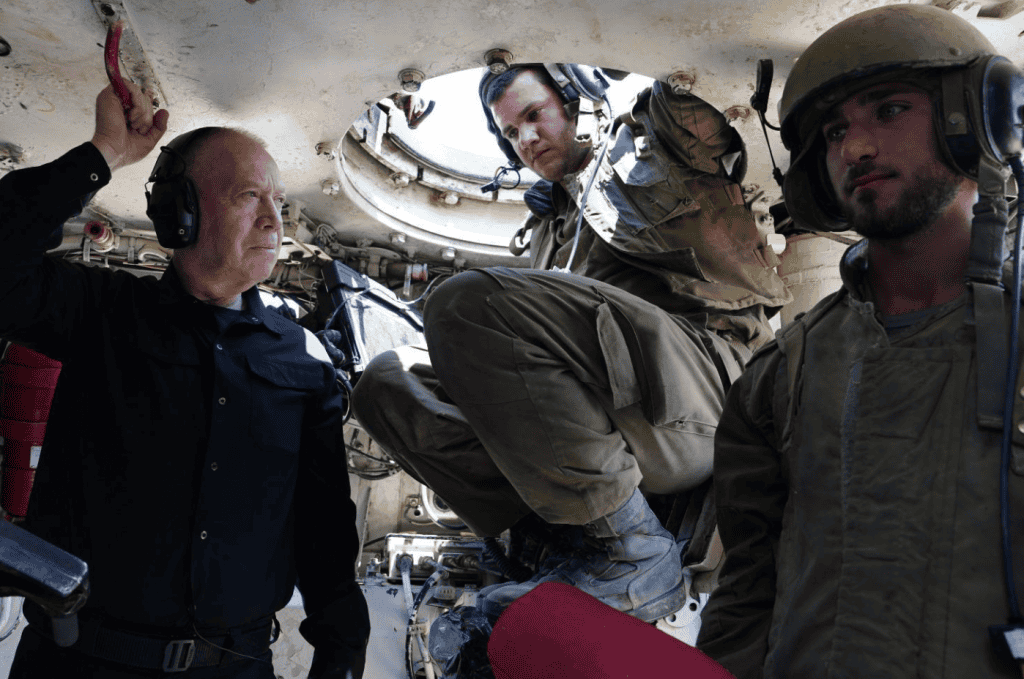
The Israel Defense Forces sent an armored column to seize the Gazan side of the Rafah crossing approximately one mile north of the Israeli border with Gaza. The tanks moved from near the Israeli community of Kerem Shalom to take control of the key crossing. This is the main crossing from Egypt into Gaza, and the IDF said that the area was being used by Hamas terrorists.
The advance followed two intense days of decision-making in Israel. On May 5, Hamas fired twin projectiles which they said were 114mm rockets at IDF troops near Kerem Shalom, which had become a staging area in recent weeks as the IDF shifted forces out of other parts of Gaza and gathered them in the Negev. Israeli leaders had vowed for months to launch a Rafah operation, but they faced challenges about how to evacuate hundreds of thousands of Gazans who had fled to Rafah in the early months of the war.
After the rocket attack on May 5 killed four soldiers, Israel’s war cabinet was moved to act. Hamas and Israel were still conducting ceasefire talks which had dragged on for months, but the two sides were too far apart to make a deal. On May 6, the IDF called for around 100,000 people to evacuate eastern Rafah and head northeast toward the Mawasi humanitarian zone. On the evening of May 6, the IDF began operations in eastern Rafah. By the morning, the tanks had reached the crossing. Infantry also moved in along the flank, penetrating north toward an area called Al-Bayuk and seeking to take the Salah al-Din road, a key east-west road that links Rafah crossing with Khan Younis and Gaza City.
“IDF ground troops began a precise counterterrorism operation based on IDF and ISA [Israel Security Agency] intelligence to eliminate Hamas terrorists and dismantle Hamas terrorist infrastructure within specific areas of eastern Rafah,” the IDF said. “Following intelligence that indicated that the Rafah Crossing in eastern Rafah was being used for terrorist purposes, IDF troops managed to establish operational control of the Gazan side of the crossing.”
The first day of the Rafah offensive saw at least 20 terrorists eliminated, the IDF added. Tunnel shafts were struck and some fifty targets were hit around eastern Rafah and other areas of Gaza. Israeli Defense Minister Yoav Gallant went to observe the progress of the operation, meeting with IDF artillery in the field. “Yesterday, I directed the IDF to enter the Rafah area, take the crossing, and carry out its missions. This operation will continue until we eliminate Hamas in the Rafah area and the entire Gaza strip, or until the first hostage returns,” he said.
“We are willing to make compromises in order to bring back hostages, but if that option is removed, we will go on and ‘deepen’ the operation- this will happen all over the [Gaza] strip – in the south, in the center and in the north. Hamas only responds to force, so we will intensify our actions, and the military pressure will result in us crushing the Hamas [terrorist] organization.”
Israel had to contend with rocket fire from Gaza on May 6 and 7. Three launches took place on May 6 and six more projectiles were fired from the Rafah area toward Kerem Shalom on May 7. Another dozen launches were detected targeting the border area of Reim. This appeared to be the sum of the Hamas response, at least initially. The group did not appear to try to hold onto the crossing or areas next to it, instead melting away into other areas of Rafah. This has been the general Hamas tactic throughout much of the war, after initial attempts to fight Israel in October and November.
On other fronts, Israel faced escalation from Hezbollah in the north as well as from Iranian-backed militias in Iraq. Hezbollah began using drones and then expanded their attacks in the early afternoon. Sirens sounded in two dozen Israeli communities. Hezbollah attacks continued close to midnight on May 7, illustrating that the group would continue escalation. Several drones were launched from Iraq, and the IDF said that it intercepted one aerial target near the southern Israeli city of Eilat on the evening of May 7. The IDF had also intercepted a drone on the evening of May 6 and May 7.







